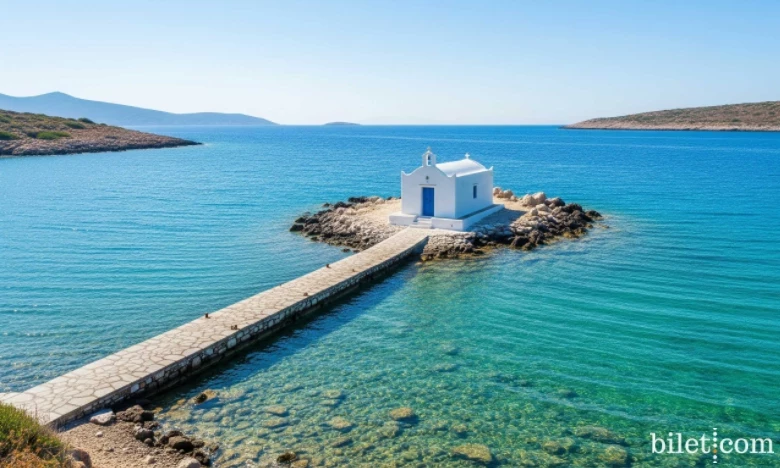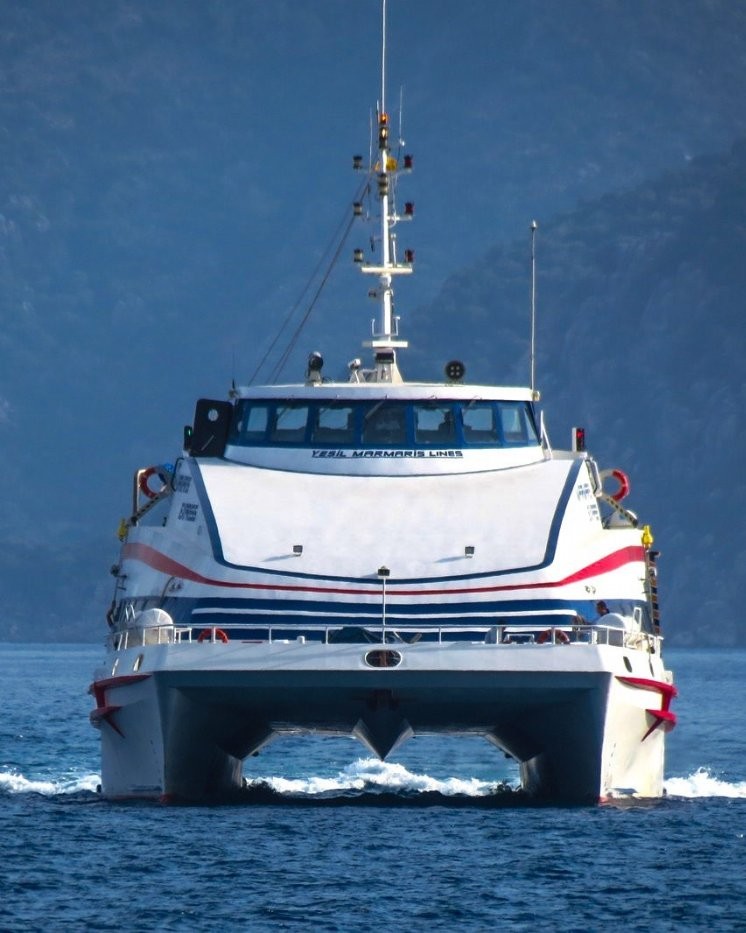Located in the heart of the Dodecanese island chain, between Patmos and Kalymnos , Leros offers its visitors a deep and layered experience that goes beyond the typical Greek island clichés. Instead of the white cubic houses of the Cyclades, this is an island filled with astonishing examples of modernist architecture from the 1930s in Italy. Having witnessed one of the most intense battles of World War II, and bearing memories of the war in its waters, Leros is also a secret haven for those seeking peace with its lush green hills, deep and sheltered bays, traditional fishing villages and authentic atmosphere. Let’s discover the complex history, unique architecture and hidden beauties of this unique island together.
The Island Behind the Names: The Origins of Leros
The origin of the name Leros dates back to ancient times, but there is no definitive evidence. According to one theory, the name comes from a hero named "Leros" who lived on the island in ancient times. Another view suggests that the name of the island is derived from a Phoenician word meaning "flat, smooth"; this may be a reference to the indented and sheltered bays of the island rather than its steep hills. In mythology, the island is associated with Artemis, the goddess of hunting, and it is known that there was an important temple dedicated to Artemis on the island in ancient times.
An Architectural Experiment: Lakki and Italian Rationalism
The most striking feature that distinguishes Leros from all the other Greek islands is its main port, the town of Lakki . The Italians, who occupied the Dodecanese in 1912, chose Lakki Bay, Leros's largest natural harbour, as their main naval base in the eastern Mediterranean.
In the 1930s, Mussolini's architects built a new and modern city here, which they called "Portolago". This city is the purest and largest example of the Italian Rationalist architectural movement of that period in Greece. Wide roads, large squares, eucalyptus trees and buildings with simple and geometric forms (cinema, market, hotel, administrative buildings) with an art-deco touch take you back in time to a completely different aesthetic. Walking around Lakki is like walking through an open-air architectural museum and gives the island a unique character.
Turning Point in History: The Battle of Leros and the Legacy of War
The modern history of Leros is shaped by one of the bloodiest events of World War II. After Italy's surrender to the Allies in 1943, the island became the scene of fierce fighting between German and Allied (British and Italian) forces due to its strategic importance. This battle, known as the "Battle of Leros", lasted over 50 days and ended in a German victory.
Guns of Navarone : This historical event was the inspiration for Alistair MacLean's famous novel and later the Oscar-winning film The Guns of Navarone , starring Gregory Peck and Anthony Quinn. Although the film was not shot on the island, the island of Kheros, where the story takes place, was heavily inspired by Leros.
War Museum: Today, the War Museum , located in an authentic war tunnel built by the Italians in Merikia, tells the story of these dramatic days to visitors with photographs, documents and objects from the Leros War.
Underwater History: The island's waters are home to numerous wrecks of planes and ships that sank during the war, making Leros one of the most interesting spots in Europe, especially for divers who want to dive to war wrecks.
Traditional and Historical Side: Agia Marina, Platanos and the Castle
In contrast to the modernist face of Leros , Lakki, considered the traditional capital of the island, is made up of three interlocking settlements:
Agia Marina & Platanos & Pandeli: The second port of the island, Agia Marina is a more typical Aegean town with neoclassical buildings and beachside cafes. It is joined by the main settlement, Platanos , on the hill. Just below Platanos is the pretty fishing village of Pandeli , on the hillside. This trio offers the more familiar face of the island with its narrow streets, windmills and traditional houses.
Pandeli Castle (Kastro tis Panagias): Perched on the hill above Platanos, this Byzantine/Knight castle offers one of the most impressive views of the island. From the top you can enjoy a 360-degree view of both Agia Marina and Pandeli bays, the neighboring islands and the endless blue of the Aegean.
Other Stops to Discover in Leros
Agios Isidoros: Built on a rock on the west coast of the island and connected to the mainland by a narrow passage, this tiny chapel is one of the most photographed, fairytale spots on Leros.
Beaches: Leros does not have crowded beaches like Mykonos, but beaches like Alinda , Vromolithos , Pandeli and Gourna are ideal for relaxing with their clear waters and calm atmosphere.
Fishing Villages: Blefoutis in the north of the island and Xirokampos with its small fishing port are great places to witness the authentic and peaceful life of the island.
Leros may not seem as "glamorous" as other Greek islands at first glance, but it is an island with a complex history and a spirit of its own that tells a unique story to its visitors as you delve deeper. It is a treasure waiting to be discovered by history buffs, architecture enthusiasts, those interested in war history and those looking for a peaceful and authentic Aegean experience away from the crowds.
How about taking an unconventional route to see the amazing architecture of Leros, follow the traces of war and get lost in the serenity of this special corner of the Aegean?







